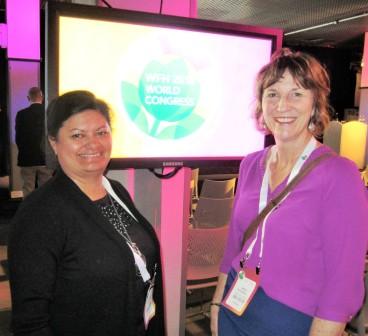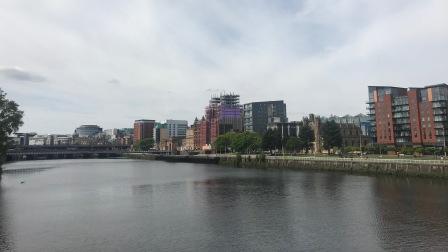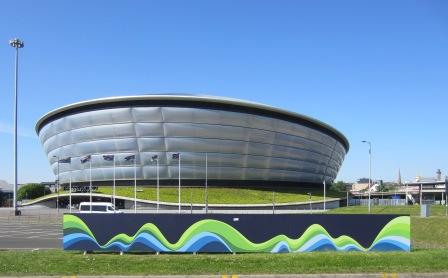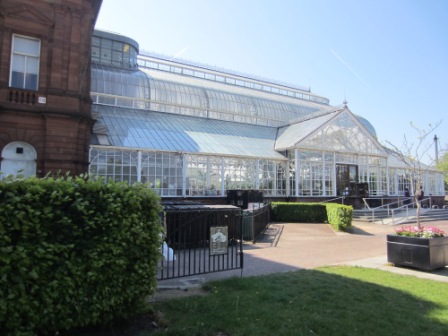MOANA HARLEN
Dr Moana Harlen is the Senior Psychologist – Haemophilia at the Queensland Haemophilia Centre, Lady Cilento Children’s Hospital, Brisbane

Moana Harlen and Linda Dockrill from NZ
PSYCHOSOCIAL PROFESSIONAL DEVELOPMENT DAY: KEEPING THE ENERGY GOING
Chairs: Silvina Graña, Argentina; Tony Roberts, South Africa
The psychosocial component of the 2018 WFH Congress began on Sunday 20 May with a professional development day for the social workers and psychologists who provide services to individuals and with bleeding disorders and their families from all around the world. It’s a great opportunity to be reacquainted with New Zealand colleagues who I normally meet with once a year at the Australian and New Zealand Haemophilia Social Worker and Counsellor’s Group meeting in Melbourne and to network and meet new colleagues to share information and ideas.
The agenda for the day was jam-packed with a variety of interesting topics consisting of key activities the WFH Psychosocial Committee have been up to in the past few years, presentations on alternative therapies (music, mindfulness, art), development of educational materials, parenting and youth leadership programmes and a presentation from the UK psychologists and social workers discussing the processes they have used to create health professional national groups.
Music and mental health of PWH
Tim Ringgold, USA
Rather than go through all the presentations I attended at the Congress, I thought I would share in more depth a presentation on the psychosocial day that I found particularly interesting. This presentation was by music therapist Tim Ringgold from Orange, California, USA, who explained in a very dynamic and energetic way how music can heal. I am going to describe my experience of his presentation through a psychologist’s eyes: I’m sure you will know that psychologists are very research and evidence-based, so I was intrigued to hear about this ‘alternative’ therapy and had some healthy scepticism but kept an open mind. Of course, we have called on music therapists to assist some of our children in the hospital to help calm them during venous access but I did not have any knowledge about how it worked exactly other than it was peaceful and helped to not only soothe the child but all of the adults in the room including me.

View across the River Clyde
Photo: Hayley Coulson
How music therapy works
Tim’s opening statement was ‘you are rhythm’. I pondered about what this meant: certainly we dance, sing and clap to music, so this didn’t seem a too far out there statement. He continued describing how most of us are prescribing ourselves music, for instance, when we create a playlist. We listen to music not only for pleasure and entertainment but also to exercise, relax, study, and when doing such mundane activities as housework (the only way I can get my vacuuming done!) and so forth. I found myself starting to relate to what Tim was saying so became intrigued about what else he had to share.
He mentioned that there is a body of evidence that suggests music therapy works – now he’s talking my language. The human brain is wired for music and requires every sub-area of the brain to process, i.e., such as when processing the pitch interval and pitch pattern. This was in keeping with my own knowledge about how both sides of the brain are activated when musicians play and read music. I also really liked how Tim described ‘music is heavy lifting for the brain’; probably more so because it means I can say that I worked out this week every day on the way to work. So how does it do this exactly? I was pleased to hear it does this via the reward systems in our brain (something psychologists are familiar with) which gave this information a good dose of credibility for me. Most of us are familiar with the feel-good hormones such as dopamine (not enough can cause depression) and oxytocin (bonding hormone): research has shown listening to music increases these hormones (just confirming what we already knew). Some research has shown that babies who bounce in rhythm with an adult were more likely to pick up pencils to help them out afterwards, suggesting that when babies and an adult danced in time together, they were more likely to lend a hand, so this increased social bonding.

SSE Hydro arena
Stress management and music
Tim then discussed the role that the stress hormone cortisol plays in the stress response. This response was very beneficial for our ancestors when their stressor was a tiger that needed to be outrun (psychologists call this stress response – fight, flight, freeze); however today such stressors needing to be outrun can include a new diagnosis, having medical procedures, or learning now to access a child’s veins. We know that chronic stress is not good for the immune system: the stress response was designed for acute emergency situations that were normally of a short duration, not for the stress hormones to stay in our bodies over a long period of time and thereby have negative consequences such as a decreased immune system. Additionally, a tiger was a real stressor whereas many stressors that people experience today are imagined, but when the mind experiences threat, be it imagined or real, it will activate the stress response. What tigers are you running from and are they real or imagined? The stress response can be reset (down-regulated) in a minimum of 8 seconds and you can be in charge of that.
Tim’s succinctly put prescription was ‘when stressed add some music have some wellness.’

People's Palace
Music helps by:
Tim also discussed creativity as a coping skill in terms of solving problems by being creative. My initial response to this was ‘oh dear I don’t have a creative bone in my body’. However, he described creativity as not being in the domain of being artistic but can include everyday things such as the way you look. He noted one way you can build creativity muscles is by playing music. You can use this to help reset the stress response. If you play a rhythm that is near the heart beat rhythm you can then either up regulate (faster rhythm to stimulate and make happy) or down regulate (slower rhythm to calm and soothe).
Tim finished off the session by taking out his guitar and getting the audience to join in and sing along with him to Lean On Me:
Some days gotta lean on our families and friends etc
Some days you learn on me and I lean on you and we don’t keep score.
Lean on me when you’re not strong and I’ll be your friend, I’ll help you carry on….
This was a fantastic start to the Congress. I certainly felt great and connected with everyone around me and have a newfound appreciation for the science behind music as a healing modality, which is in keeping with many of the psychology principles I use in my everyday practice. This was a pleasant and unexpected learning for me as a psychologist attending the Congress and I wanted to share it with you as we can all access music for ourselves and/or others in some way and listen to, play or create music thereby increasing our own and others sense of wellbeing.
Dr Moana Harlen was funded by HFA to represent the Australian and New Zealand Haemophilia Social Worker and Counsellor’s Group at the WFH 2018 World Congress.
Haemophilia Foundation Australia acknowledges the Traditional Owners and Custodians of Country throughout Australia, the land, waters and community where we walk, live, meet and work. We pay our respects to Elders past and present and extend that respect to all Aboriginal and Torres Strait Islander peoples.
Sign up for the latest news, events and our free National Haemophilia magazine